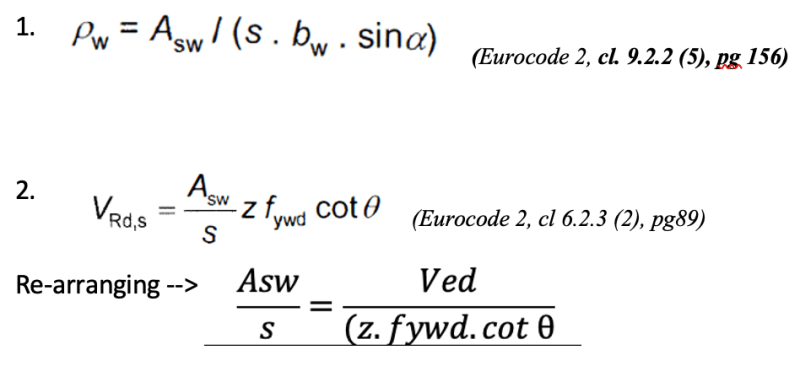Pretty Girl7
Civil/Environmental
- Nov 30, 2022
- 78
I'm calculating shear r/f,
So, I came across with the following two equations for concrete beam shear reinforcement, mentioned at totally different pages in the same Eurocode2.

I already calculated the Cot theta angle (strut angle). And I can see that can feed the "design shear (Ved)" directly into the second equation and get the required "reinforcement/space" ratio.
But, what is the use case of the first equation? When should I use it? Why there are two equations?
So, I came across with the following two equations for concrete beam shear reinforcement, mentioned at totally different pages in the same Eurocode2.

I already calculated the Cot theta angle (strut angle). And I can see that can feed the "design shear (Ved)" directly into the second equation and get the required "reinforcement/space" ratio.
But, what is the use case of the first equation? When should I use it? Why there are two equations?
